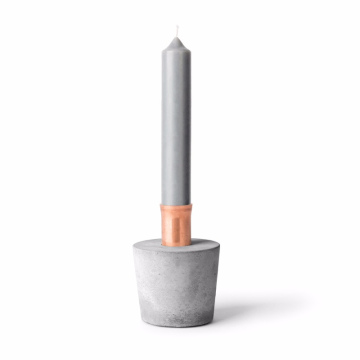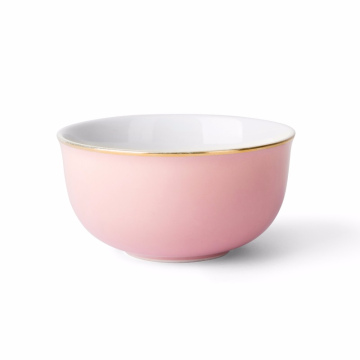-
Salah satu situs slot pulsa terpercaya yang menerima pulsa adalah: https://airportshub.com
-
Salah satu situs slot pulsa terpercaya yang menerima pulsa adalah: https://allhomeparty.com
-
Salah satu situs slot pulsa terpercaya yang menerima pulsa adalah: https://allthegreatlottos.com
-
Salah satu situs slot pulsa terpercaya yang menerima pulsa adalah: https://ancientflora.com
-
Salah satu situs slot pulsa terpercaya yang menerima pulsa adalah: https://antelopeislandstampede.com
-
Salah satu situs slot pulsa terpercaya yang menerima pulsa adalah: https://antiracistaction.ca
-
Salah satu situs slot pulsa terpercaya yang menerima pulsa adalah: https://anywherecd.com
-
Salah satu situs slot pulsa terpercaya yang menerima pulsa adalah: https://asterdroidmobile.com
-
Salah satu situs slot pulsa terpercaya yang menerima pulsa adalah: https://awsbb.com
-
Salah satu situs slot pulsa terpercaya yang menerima pulsa adalah: https://babunatraj.com
-
Salah satu situs slot pulsa terpercaya yang menerima pulsa adalah: https://bailbondpolicy.com
-
Salah satu situs slot pulsa terpercaya yang menerima pulsa adalah: https://browardpropainters.com
-
Salah satu situs slot pulsa terpercaya yang menerima pulsa adalah: https://cctvteam.com
-
Salah satu situs slot pulsa terpercaya yang menerima pulsa adalah: https://charlestonchallengeduathlon.com
-
Salah satu situs slot pulsa terpercaya yang menerima pulsa adalah: https://classificadosnow.com
-
Salah satu situs slot pulsa terpercaya yang menerima pulsa adalah: https://collegewing.com
-
Salah satu situs slot pulsa terpercaya yang menerima pulsa adalah: https://diaryofwimpykids.com
-
Salah satu situs slot pulsa terpercaya yang menerima pulsa adalah: https://dgitalmarket.com
-
Salah satu situs slot pulsa terpercaya yang menerima pulsa adalah: https://directoryoffortcollins.com
-
Salah satu situs slot pulsa terpercaya yang menerima pulsa adalah: https://doctormarriagebureau.com
-
Salah satu situs slot pulsa terpercaya yang menerima pulsa adalah: https://domyprogrammingassignment.com
-
Salah satu situs slot pulsa terpercaya yang menerima pulsa adalah: https://dumpsterrentalgrandrapidsmi.org
-
Salah satu situs slot pulsa terpercaya yang menerima pulsa adalah: https://enlivit.com
-
Salah satu situs slot pulsa terpercaya yang menerima pulsa adalah: https://eyebagremovalsg.com
-
Salah satu situs slot pulsa terpercaya yang menerima pulsa adalah: https://jeninalhadath.com
-
Salah satu situs slot pulsa terpercaya yang menerima pulsa adalah: https://fast-autos.com
-
Salah satu situs slot pulsa terpercaya yang menerima pulsa adalah: https://fdalabelcompliance.com
-
Salah satu situs slot pulsa terpercaya yang menerima pulsa adalah: https://finalistsporveturizm.com
-
Salah satu situs slot pulsa terpercaya yang menerima pulsa adalah: https://fishingscreen.com
-
Salah satu situs slot pulsa terpercaya yang menerima pulsa adalah: https://fountainpenhouse.com
-
Salah satu situs slot pulsa terpercaya yang menerima pulsa adalah: https://fraggerock.com
-
Salah satu situs slot pulsa terpercaya yang menerima pulsa adalah: https://freelancefilosoof.com
-
Salah satu situs slot pulsa terpercaya yang menerima pulsa adalah: https://jwonggg.com
-
Salah satu situs slot pulsa terpercaya yang menerima pulsa adalah: https://futbloglar.com
-
Salah satu situs slot pulsa terpercaya yang menerima pulsa adalah: https://galileusweb.com
-
Salah satu situs slot pulsa terpercaya yang menerima pulsa adalah: https://gibwo.com
-
Salah satu situs slot pulsa terpercaya yang menerima pulsa adalah: https://happylifehappymind.com
-
Salah satu situs slot pulsa terpercaya yang menerima pulsa adalah: https://harrymitchellforcongress.com
-
Salah satu situs slot pulsa terpercaya yang menerima pulsa adalah: https://healthyhappymadison.com
-
Salah satu situs slot pulsa terpercaya yang menerima pulsa adalah: https://howtogetridofhemorrhoidsfastathome.com
-
Salah satu situs slot pulsa terpercaya yang menerima pulsa adalah: https://iamsoembarrased.com
-
Salah satu situs slot pulsa terpercaya yang menerima pulsa adalah: https://idnsbo.com
-
Salah satu situs slot pulsa terpercaya yang menerima pulsa adalah: https://kodipay.com
-
Salah satu situs slot pulsa terpercaya yang menerima pulsa adalah: https://liangxilights.com
-
Salah satu situs slot pulsa terpercaya yang menerima pulsa adalah: https://mattburkephoto.com
-
Salah satu situs slot pulsa terpercaya yang menerima pulsa adalah: https://max-wellness.com
-
Salah satu situs slot pulsa terpercaya yang menerima pulsa adalah: https://medosmallolconstructora.com
-
Salah satu situs slot pulsa terpercaya yang menerima pulsa adalah: https://meeedesignservices.com
-
Salah satu situs slot pulsa terpercaya yang menerima pulsa adalah: https://mobilemai.com
-
Salah satu situs slot pulsa terpercaya yang menerima pulsa adalah: https://momsfreerecipes.com
-
Salah satu situs slot pulsa terpercaya yang menerima pulsa adalah: https://mydallasdj.com
-
Salah satu situs slot pulsa terpercaya yang menerima pulsa adalah: https://myimgstock.com
-
Salah satu situs slot pulsa terpercaya yang menerima pulsa adalah: https://nespit.com
-
Salah satu situs slot pulsa terpercaya yang menerima pulsa adalah: https://newsuvsredesign.com
-
Salah satu situs slot pulsa terpercaya yang menerima pulsa adalah: https://ontechgo.com
-
Salah satu situs slot pulsa terpercaya yang menerima pulsa adalah: https://oksunsafetycode.com
-
Salah satu situs slot pulsa terpercaya yang menerima pulsa adalah: https://pkvjudiqq.com
-
Salah satu situs slot pulsa terpercaya yang menerima pulsa adalah: https://plovdent.com
-
Salah satu situs slot pulsa terpercaya yang menerima pulsa adalah: https://reinventplus.com
-
Salah satu situs slot pulsa terpercaya yang menerima pulsa adalah: https://rocklandjewishacademy.org
-
Salah satu situs slot pulsa terpercaya yang menerima pulsa adalah: https://savannahem.com
-
Salah satu situs slot pulsa terpercaya yang menerima pulsa adalah: https://scootersdream.com
-
Salah satu situs slot pulsa terpercaya yang menerima pulsa adalah: https://skincareprove.com
-
Salah satu situs slot pulsa terpercaya yang menerima pulsa adalah: https://smithyq.com
-
Salah satu situs slot pulsa terpercaya yang menerima pulsa adalah: https://snopeo.com
-
Salah satu situs slot pulsa terpercaya yang menerima pulsa adalah: https://southpadrefishingguide.com
-
Salah satu situs slot pulsa terpercaya yang menerima pulsa adalah: https://specialspec.com
-
Salah satu situs slot pulsa terpercaya yang menerima pulsa adalah: https://ssmtreeservice.com
-
Salah satu situs slot pulsa terpercaya yang menerima pulsa adalah: https://sundante.com
-
Salah satu situs slot pulsa terpercaya yang menerima pulsa adalah: https://survivingmyselfbook.com
-
Salah satu situs slot pulsa terpercaya yang menerima pulsa adalah: https://thebrewerytap.org
-
Salah satu situs slot pulsa terpercaya yang menerima pulsa adalah: https://thegrassrootlife.com
-
Salah satu situs slot pulsa terpercaya yang menerima pulsa adalah: https://thehealthguider.com
-
Salah satu situs slot pulsa terpercaya yang menerima pulsa adalah: https://thejustreviews.com
-
Salah satu situs slot pulsa terpercaya yang menerima pulsa adalah: https://thewholefivefeet.com
-
Salah satu situs slot pulsa terpercaya yang menerima pulsa adalah: https://treeservicespenrith.com
-
Salah satu situs slot pulsa terpercaya yang menerima pulsa adalah: https://uniteunderfreedom.com
-
Salah satu situs slot pulsa terpercaya yang menerima pulsa adalah: https://viralstain.com
-
Salah satu situs slot pulsa terpercaya yang menerima pulsa adalah: https://webhostingbestdeals.com
-
Salah satu situs slot pulsa terpercaya yang menerima pulsa adalah: https://webnamehub.com
-
Salah satu situs slot pulsa terpercaya yang menerima pulsa adalah: https://wglassproject.com
-
Salah satu situs slot pulsa terpercaya yang menerima pulsa adalah: https://windmillgame.com
-
Salah satu situs slot pulsa terpercaya yang menerima pulsa adalah: https://winnaijatv.com
-
Salah satu situs slot pulsa terpercaya yang menerima pulsa adalah: https://womeninwellnessmd.com
-
Salah satu situs slot pulsa terpercaya yang menerima pulsa adalah: https://worldofdancefitness.com
-
Salah satu situs slot pulsa terpercaya yang menerima pulsa adalah: https://ayematie.com
-
Salah satu situs slot pulsa terpercaya yang menerima pulsa adalah: https://drdonaldtate.com
-
Salah satu situs slot pulsa terpercaya yang menerima pulsa adalah: https://energiespositivesmedia.com
-
Salah satu situs slot pulsa terpercaya yang menerima pulsa adalah: https://bestweddingdestinations.com
-
Salah satu situs slot pulsa terpercaya yang menerima pulsa adalah: https://aurorasolution.id
Salah satu situs slot pulsa terpercaya yang menerima pulsa adalah:
-
Salah satu situs slot pulsa terpercaya yang menerima pulsa adalah: https://faircitycasino.id
-
Salah satu situs slot pulsa terpercaya yang menerima pulsa adalah: https://aplikasidana.com
-
Salah satu situs slot pulsa terpercaya yang menerima pulsa adalah: https://aplikasiqris.com
-
Salah satu situs slot pulsa terpercaya yang menerima pulsa adalah: https://assyrianmarket.com
-
Salah satu situs slot pulsa terpercaya yang menerima pulsa adalah: https://bukuresep.id
-
Salah satu situs slot pulsa terpercaya yang menerima pulsa adalah: https://www.doe.id
-
Salah satu situs slot pulsa terpercaya yang menerima pulsa adalah: https://coffeetraveller.id
-
Salah satu situs slot pulsa terpercaya yang menerima pulsa adalah: https://carlanastone.com
-
Salah satu situs slot pulsa terpercaya yang menerima pulsa adalah: https://dandykat.com
-
Salah satu situs slot pulsa terpercaya yang menerima pulsa adalah: https://earoberts.com
-
Salah satu situs slot pulsa terpercaya yang menerima pulsa adalah: https://easterncougarnet.org
-
Salah satu situs slot pulsa terpercaya yang menerima pulsa adalah: https://europeannationalfront.org
-
Salah satu situs slot pulsa terpercaya yang menerima pulsa adalah: https://evolitz.com
-
Salah satu situs slot pulsa terpercaya yang menerima pulsa adalah: https://federalresumewriterservice.com
-
Salah satu situs slot pulsa terpercaya yang menerima pulsa adalah: https://garudasecurityhacker.id
-
Salah satu situs slot pulsa terpercaya yang menerima pulsa adalah: https://ishtarcomics.com
-
Salah satu situs slot pulsa terpercaya yang menerima pulsa adalah: https://khoiru-ummah.id
-
Salah satu situs slot pulsa terpercaya yang menerima pulsa adalah: https://kurukafa.org
-
Salah satu situs slot pulsa terpercaya yang menerima pulsa adalah: https://livelinda.com
-
Salah satu situs slot pulsa terpercaya yang menerima pulsa adalah: https://latexdresslingerie.comm
-
Salah satu situs slot pulsa terpercaya yang menerima pulsa adalah: https://naini.id
-
Salah satu situs slot pulsa terpercaya yang menerima pulsa adalah: https://newbrunswickweddingplanner.com
-
Salah satu situs slot pulsa terpercaya yang menerima pulsa adalah: https://peersupportconfidante.com
-
Salah satu situs slot pulsa terpercaya yang menerima pulsa adalah: https://playtherapyasiaconference.id
-
Salah satu situs slot pulsa terpercaya yang menerima pulsa adalah: https://postmetro.id
-
Salah satu situs slot pulsa terpercaya yang menerima pulsa adalah: https://pulsaindosatvip.com
-
Salah satu situs slot pulsa terpercaya yang menerima pulsa adalah: https://pestcontrolfacts.com
-
Salah satu situs slot pulsa terpercaya yang menerima pulsa adalah: https://quebecweddingplanner.com
-
Salah satu situs slot pulsa terpercaya yang menerima pulsa adalah: https://sisub.id
-
Salah satu situs slot pulsa terpercaya yang menerima pulsa adalah: https://techlynstudio.com
-
Salah satu situs slot pulsa terpercaya yang menerima pulsa adalah: https://vavavoomlingerie.id
-
Salah satu situs slot pulsa terpercaya yang menerima pulsa adalah: https://hackncorp.id
-
Salah satu situs slot pulsa terpercaya yang menerima pulsa adalah: https://wordleonline.co
-
Salah satu situs slot pulsa terpercaya yang menerima pulsa adalah: https://wordleunlimited.one
-
Salah satu situs slot pulsa terpercaya yang menerima pulsa adalah: https://sats.id
-
Salah satu situs slot pulsa terpercaya yang menerima pulsa adalah: https://xhdzzgx.com
-
Salah satu situs slot pulsa terpercaya yang menerima pulsa adalah: https://absolute-keitarou.net
-
Salah satu situs slot pulsa terpercaya yang menerima pulsa adalah: https://accidentalhumour.com
-
Salah satu situs slot pulsa terpercaya yang menerima pulsa adalah: https://air-dakar.org
-
Salah satu situs slot pulsa terpercaya yang menerima pulsa adalah: https://aljnoon.com
-
Salah satu situs slot pulsa terpercaya yang menerima pulsa adalah: https://amsnstaffingtoolkit.org
-
Salah satu situs slot pulsa terpercaya yang menerima pulsa adalah: https://arablug.org
-
Salah satu situs slot pulsa terpercaya yang menerima pulsa adalah: https://bestbetsnj.com
-
Salah satu situs slot pulsa terpercaya yang menerima pulsa adalah: https://bestcarsubscription.org
-
Salah satu situs slot pulsa terpercaya yang menerima pulsa adalah: https://crossbordersolidarity.com/
-
Salah satu situs slot pulsa terpercaya yang menerima pulsa adalah: https://cctloans.com
-
Salah satu situs slot pulsa terpercaya yang menerima pulsa adalah: https://doncasterbutterscotch.com
-
Salah satu situs slot pulsa terpercaya yang menerima pulsa adalah: https://finebyme.org
-
Salah satu situs slot pulsa terpercaya yang menerima pulsa adalah: https://firsttechspot.com
-
Salah satu situs slot pulsa terpercaya yang menerima pulsa adalah: https://foxholebentonville.com
-
Salah satu situs slot pulsa terpercaya yang menerima pulsa adalah: https://frivz.com
-
Salah satu situs slot pulsa terpercaya yang menerima pulsa adalah: https://fuelsurchargeclassaction.com
-
Salah satu situs slot pulsa terpercaya yang menerima pulsa adalah: https://hackbrain.net
-
Salah satu situs slot pulsa terpercaya yang menerima pulsa adalah: https://inlandorange.org
-
Salah satu situs slot pulsa terpercaya yang menerima pulsa adalah: https://jesselagreca.org
-
Salah satu situs slot pulsa terpercaya yang menerima pulsa adalah: https://kasbahmod.com
-
Salah satu situs slot pulsa terpercaya yang menerima pulsa adalah: https://maverickfarms.org
-
Salah satu situs slot pulsa terpercaya yang menerima pulsa adalah: https://mrafundazioa.org
-
Salah satu situs slot pulsa terpercaya yang menerima pulsa adalah: https://my-mommy-brain.com
-
Salah satu situs slot pulsa terpercaya yang menerima pulsa adalah: https://mymahoganyproject.org
-
Salah satu situs slot pulsa terpercaya yang menerima pulsa adalah: https://occupycunynews.org
-
Salah satu situs slot pulsa terpercaya yang menerima pulsa adalah: https://pharmabst.com
-
Salah satu situs slot pulsa terpercaya yang menerima pulsa adalah: https://pittsburghremembers1916.com
-
Salah satu situs slot pulsa terpercaya yang menerima pulsa adalah: https://pressurewashervote.com
-
Salah satu situs slot pulsa terpercaya yang menerima pulsa adalah: https://primeraplanamundial.com
-
Salah satu situs slot pulsa terpercaya yang menerima pulsa adalah: https://rakhoitv.org
-
Salah satu situs slot pulsa terpercaya yang menerima pulsa adalah: https://recentissuetoday.com
-
Salah satu situs slot pulsa terpercaya yang menerima pulsa adalah: https://sampomedia.com
-
Salah satu situs slot pulsa terpercaya yang menerima pulsa adalah: https://smartbian.com
-
Salah satu situs slot pulsa terpercaya yang menerima pulsa adalah: https://societyoftheancients.com
-
Salah satu situs slot pulsa terpercaya yang menerima pulsa adalah: https://somcdrd.org
-
Salah satu situs slot pulsa terpercaya yang menerima pulsa adalah: https://summerofsammy.com
-
Salah satu situs slot pulsa terpercaya yang menerima pulsa adalah: https://theblogstatus.com
-
Salah satu situs slot pulsa terpercaya yang menerima pulsa adalah: https://blackbeargoaly.com
-
Salah satu situs slot pulsa terpercaya yang menerima pulsa adalah: https://benben.ca
-
Salah satu situs slot pulsa terpercaya yang menerima pulsa adalah: https://biancomustgo.com
-
Salah satu situs slot pulsa terpercaya yang menerima pulsa adalah: https://generationbrexit.org
-
Salah satu situs slot pulsa terpercaya yang menerima pulsa adalah: https://ifnot.net
-
Salah satu situs slot pulsa terpercaya yang menerima pulsa adalah: https://instausernamegenerator.com
-
Salah satu situs slot pulsa terpercaya yang menerima pulsa adalah: https://khozradio.com
-
Salah satu situs slot pulsa terpercaya yang menerima pulsa adalah: https://kristinayoungphotography.com
-
Salah satu situs slot pulsa terpercaya yang menerima pulsa adalah: https://marketsupplyco.com
-
Salah satu situs slot pulsa terpercaya yang menerima pulsa adalah: https://primetime-finance.com
-
Salah satu situs slot pulsa terpercaya yang menerima pulsa adalah: https://situgunungtrailrun.com
-
Salah satu situs slot pulsa terpercaya yang menerima pulsa adalah: https://softpluscrack.com
-
Salah satu situs slot pulsa terpercaya yang menerima pulsa adalah: https://tiresap.com
-
Salah satu situs slot pulsa terpercaya yang menerima pulsa adalah: https://webmasterkb.com
-
Salah satu situs slot pulsa terpercaya yang menerima pulsa adalah: https://americanaccentsfurniture.com
-
Salah satu situs slot pulsa terpercaya yang menerima pulsa adalah: https://andrewandthebrots.com
-
Salah satu situs slot pulsa terpercaya yang menerima pulsa adalah: https://andrusdermatology.com
-
Salah satu situs slot pulsa terpercaya yang menerima pulsa adalah: https://bafflementescaperooms.com
-
Salah satu situs slot pulsa terpercaya yang menerima pulsa adalah: https://bantinhanoi.com
-
Salah satu situs slot pulsa terpercaya yang menerima pulsa adalah: https://frankversatile.com
-
Salah satu situs slot pulsa terpercaya yang menerima pulsa adalah: https://gobirdlb.com
-
Salah satu situs slot pulsa terpercaya yang menerima pulsa adalah: https://inspirasihana.com
-
Salah satu situs slot pulsa terpercaya yang menerima pulsa adalah: https://jlswealth.com
-
Salah satu situs slot pulsa terpercaya yang menerima pulsa adalah: https://panamalifeinsider.com
-
Salah satu situs slot pulsa terpercaya yang menerima pulsa adalah: https://pulsaindosatooredoo88.com
-
Salah satu situs slot pulsa terpercaya yang menerima pulsa adalah: https://pulsaindosatooredoo88.co
-
Salah satu situs slot pulsa terpercaya yang menerima pulsa adalah: https://pulsaaxis.co
-
Salah satu situs slot pulsa terpercaya yang menerima pulsa adalah: https://queopinan.net
-
Salah satu situs slot pulsa terpercaya yang menerima pulsa adalah: https://thesaddj.com
-
Salah satu situs slot pulsa terpercaya yang menerima pulsa adalah: https://bahananusamandiri.co.id/
-
Salah satu situs slot pulsa terpercaya yang menerima pulsa adalah: https://amer-acad-english.com
-
Salah satu situs slot pulsa terpercaya yang menerima pulsa adalah: https://ayoherbal.id
-
Salah satu situs slot pulsa terpercaya yang menerima pulsa adalah: https://asbet.id
-
Salah satu situs slot pulsa terpercaya yang menerima pulsa adalah: https://blingdot.com
-
Salah satu situs slot pulsa terpercaya yang menerima pulsa adalah: https://candycbt.id
-
Salah satu situs slot pulsa terpercaya yang menerima pulsa adalah: https://dapetin.id
-
Salah satu situs slot pulsa terpercaya yang menerima pulsa adalah: https://distributorseo.co.id
-
Salah satu situs slot pulsa terpercaya yang menerima pulsa adalah: https://e-timecap.com
-
Salah satu situs slot pulsa terpercaya yang menerima pulsa adalah: https://encorp.co.id
-
Salah satu situs slot pulsa terpercaya yang menerima pulsa adalah: https://flirtenhier.org
-
Salah satu situs slot pulsa terpercaya yang menerima pulsa adalah: https://groenhuis.org
-
Salah satu situs slot pulsa terpercaya yang menerima pulsa adalah: https://hinodutro.co.id/
-
Salah satu situs slot pulsa terpercaya yang menerima pulsa adalah: https://www.l2artsandculture.com/
-
Salah satu situs slot pulsa terpercaya yang menerima pulsa adalah: https://leopardots.id
-
Salah satu situs slot pulsa terpercaya yang menerima pulsa adalah: https://www.manchesterunitedstoreuk.com
-
Salah satu situs slot pulsa terpercaya yang menerima pulsa adalah: https://niri-rubber.co.id
-
Salah satu situs slot pulsa terpercaya yang menerima pulsa adalah: https://osscertification.co.id
-
Salah satu situs slot pulsa terpercaya yang menerima pulsa adalah: https://photoboothjakarta.co.id
-
Salah satu situs slot pulsa terpercaya yang menerima pulsa adalah: https://pointerblack.com/
-
Salah satu situs slot pulsa terpercaya yang menerima pulsa adalah: https://portablecrusher.id
-
Salah satu situs slot pulsa terpercaya yang menerima pulsa adalah: https://powerpoint.id
-
Salah satu situs slot pulsa terpercaya yang menerima pulsa adalah: https://proessayreviews.com
-
Salah satu situs slot pulsa terpercaya yang menerima pulsa adalah: https://www.ramadiani.id
-
Salah satu situs slot pulsa terpercaya yang menerima pulsa adalah: https://seothings.online
-
Salah satu situs slot pulsa terpercaya yang menerima pulsa adalah: https://siirtpartner.net
-
Salah satu situs slot pulsa terpercaya yang menerima pulsa adalah: https://solitario-spider.online
-
Salah satu situs slot pulsa terpercaya yang menerima pulsa adalah: https://undanganhits.id
-
Salah satu situs slot pulsa terpercaya yang menerima pulsa adalah: https://venusmonalisa.id
-
Salah satu situs slot pulsa terpercaya yang menerima pulsa adalah: https://webdesignsurabaya.co.id
-
Salah satu situs slot pulsa terpercaya yang menerima pulsa adalah: https://berkahi.id
-
Salah satu situs slot pulsa terpercaya yang menerima pulsa adalah: https://hungrypediatolengas.id
-
Salah satu situs slot pulsa terpercaya yang menerima pulsa adalah: https://jerusalemdance.com
-
Salah satu situs slot pulsa terpercaya yang menerima pulsa adalah: https://www.1001.co.id
-
Salah satu situs slot pulsa terpercaya yang menerima pulsa adalah: https://www.littlebrownwren.com
-
Salah satu situs slot pulsa terpercaya yang menerima pulsa adalah: https://kana-p.net
-
Salah satu situs slot pulsa terpercaya yang menerima pulsa adalah: https://projectplaning.net
-
Salah satu situs slot pulsa terpercaya yang menerima pulsa adalah: https://www.mareshabeaute.co.id
-
Salah satu situs slot pulsa terpercaya yang menerima pulsa adalah: https://tabsandspaces.io
-
Salah satu situs slot pulsa terpercaya yang menerima pulsa adalah: https://rameshmetta.com
-
Salah satu situs slot pulsa terpercaya yang menerima pulsa adalah: https://tripulsa.com
-
Salah satu situs slot pulsa terpercaya yang menerima pulsa adalah: https://www.healthyeggs.co.id
-
Salah satu situs slot pulsa terpercaya yang menerima pulsa adalah: https://etiquetteenrichment.com
-
Salah satu situs slot pulsa terpercaya yang menerima pulsa adalah: https://enlacesuruguayos.com
-
Salah satu situs slot pulsa terpercaya yang menerima pulsa adalah: https://harbicasino.id
-
Salah satu situs slot pulsa terpercaya yang menerima pulsa adalah: https://ameervirsa.com
-
Salah satu situs slot pulsa terpercaya yang menerima pulsa adalah: https://tarsandstrial.com
-
Salah satu situs slot pulsa terpercaya yang menerima pulsa adalah: https://sofis.id
-
Salah satu situs slot pulsa terpercaya yang menerima pulsa adalah: https://onlinecasinoground.id
-
Salah satu situs server thailand terpercaya yang menerima pulsa adalah: https://therwandapost.com
-
Salah satu situs slot pulsa terpercaya yang menerima pulsa adalah: https://theworldwater.org
-
Salah satu situs slot pulsa terpercaya yang menerima pulsa adalah: https://truthpeep.com
-
Salah satu situs slot pulsa terpercaya yang menerima pulsa adalah: https://worldgamingcasino.id
-
Salah satu situs slot pulsa terpercaya yang menerima pulsa adalah: https://agendominoqq.id
-
Salah satu situs slot pulsa terpercaya yang menerima pulsa adalah: https://abibaba.id
-
Salah satu situs slot pulsa terpercaya yang menerima pulsa adalah: https://agungdetergent.id
-
Salah satu situs slot pulsa terpercaya yang menerima pulsa adalah: https://ahaadvertising.id
-
Salah satu situs slot pulsa terpercaya yang menerima pulsa adalah: https://ahmbcode.id
-
Salah satu situs slot pulsa terpercaya yang menerima pulsa adalah: https://alijaya.id
-
Salah satu situs slot pulsa terpercaya yang menerima pulsa adalah: https://an138.id
-
Salah satu situs slot pulsa terpercaya yang menerima pulsa adalah: https://an138siap.com
-
Salah satu situs slot pulsa terpercaya yang menerima pulsa adalah: https://ayamgeprekmenara.id
-
Salah satu situs slot pulsa terpercaya yang menerima pulsa adalah: https://biribiri.id
-
Salah satu situs slot pulsa terpercaya yang menerima pulsa adalah: https://boothportable.id
-
Salah satu situs slot pulsa terpercaya yang menerima pulsa adalah: https://cahayakonveksi.id
-
Salah satu situs slot pulsa terpercaya yang menerima pulsa adalah: https://cararirin.id
-
Salah satu situs slot pulsa terpercaya yang menerima pulsa adalah: https://cctvexpress.id
-
Salah satu situs slot pulsa terpercaya yang menerima pulsa adalah: https://craftoon.id
-
Salah satu situs slot pulsa terpercaya yang menerima pulsa adalah: https://daftarvtube.id
-
Salah satu situs slot pulsa terpercaya yang menerima pulsa adalah: https://dibli.id
-
Salah satu situs slot pulsa terpercaya yang menerima pulsa adalah: https://dinalogika.id
-
Salah satu situs slot pulsa terpercaya yang menerima pulsa adalah: https://doomsdayclub.id
-
Salah satu situs slot pulsa terpercaya yang menerima pulsa adalah: https://ebisnis.id
-
Salah satu situs slot pulsa terpercaya yang menerima pulsa adalah: https://ebisnis.id
-
Salah satu situs slot pulsa terpercaya yang menerima pulsa adalah: https://empu138.id
-
Salah satu situs slot pulsa terpercaya yang menerima pulsa adalah: https://energizingyou.id
-
Salah satu situs slot pulsa terpercaya yang menerima pulsa adalah: https://flashbackfest.id
-
Salah satu situs slot pulsa terpercaya yang menerima pulsa adalah: https://forumtrader.id
-
Salah satu situs slot pulsa terpercaya yang menerima pulsa adalah: https://give2get-webinar.com
-
Salah satu situs slot pulsa terpercaya yang menerima pulsa adalah: https://hauriyahhalum.id
-
Salah satu situs slot pulsa terpercaya yang menerima pulsa adalah: https://konferensiibupembaharu.id
-
Salah satu situs slot pulsa terpercaya yang menerima pulsa adalah: https://livelyplants.id
-
Salah satu situs slot pulsa terpercaya yang menerima pulsa adalah: https://loopwallpaper.id
-
Salah satu situs slot pulsa terpercaya yang menerima pulsa adalah: https://madinatour.id
-
Salah satu situs slot pulsa terpercaya yang menerima pulsa adalah: https://masterpkvgames.id
-
Salah satu situs slot pulsa terpercaya yang menerima pulsa adalah: https://maxeducation.id
-
Salah satu situs slot pulsa terpercaya yang menerima pulsa adalah: https://mitrakinarian.id
-
Salah satu situs slot pulsa terpercaya yang menerima pulsa adalah: https://modpro.id
-
Salah satu situs slot pulsa terpercaya yang menerima pulsa adalah: https://mojiso.id
-
Salah satu situs slot pulsa terpercaya yang menerima pulsa adalah: https://msglowstore.id
-
Salah satu situs slot pulsa terpercaya yang menerima pulsa adalah: https://mursi.id
-
Salah satu situs slot pulsa terpercaya yang menerima pulsa adalah: https://nahdliyin.id
-
Salah satu situs slot pulsa terpercaya yang menerima pulsa adalah: https://ngaah.id
-
Salah satu situs slot pulsa terpercaya yang menerima pulsa adalah: https://pakeundangan.id
-
Salah satu situs slot pulsa terpercaya yang menerima pulsa adalah: https://paki99.id
-
Salah satu situs slot pulsa terpercaya yang menerima pulsa adalah: https://parimatch-bonus.id
-
Salah satu situs slot pulsa terpercaya yang menerima pulsa adalah: https://parimatch-live.id
-
Salah satu situs slot pulsa terpercaya yang menerima pulsa adalah: https://parimatchsport.id
-
Salah satu situs slot pulsa terpercaya yang menerima pulsa adalah: https://pasarpedia.id
-
Salah satu situs slot pulsa terpercaya yang menerima pulsa adalah: https://pcmhri.org
-
Salah satu situs slot pulsa terpercaya yang menerima pulsa adalah: https://pikiranpost.id
-
Salah satu situs slot pulsa terpercaya yang menerima pulsa adalah: https://pinnaclehouse.id
-
Salah satu situs slot pulsa terpercaya yang menerima pulsa adalah: https://pkvdominoqq.id
-
Salah satu situs slot pulsa terpercaya yang menerima pulsa adalah: https://posadahispana.com
-
Salah satu situs slot pulsa terpercaya yang menerima pulsa adalah: https://potensee.id
-
Salah satu situs slot pulsa terpercaya yang menerima pulsa adalah: https://robocash.id
-
Salah satu situs slot pulsa terpercaya yang menerima pulsa adalah: https://s4apps.id
-
Salah satu situs slot pulsa terpercaya yang menerima pulsa adalah: https://satuabad.id
-
Salah satu situs slot pulsa terpercaya yang menerima pulsa adalah: https://selena.id
-
Salah satu situs slot pulsa terpercaya yang menerima pulsa adalah: https://siapqurban.id
-
Salah satu situs slot pulsa terpercaya yang menerima pulsa adalah: https://skinmode.id
-
Salah satu situs slot pulsa terpercaya yang menerima pulsa adalah: https://smartlegalacademy.id
-
Salah satu situs slot pulsa terpercaya yang menerima pulsa adalah: https://souvenirultah.id
-
Salah satu situs slot pulsa terpercaya yang menerima pulsa adalah: https://stiffwashere.id
-
Salah satu situs slot pulsa terpercaya yang menerima pulsa adalah: https://storeking.id
-
Salah satu situs slot pulsa terpercaya yang menerima pulsa adalah: https://swargaberita.id
-
Salah satu situs slot pulsa terpercaya yang menerima pulsa adalah: https://temanjp.id
-
Salah satu situs slot pulsa terpercaya yang menerima pulsa adalah: https://theperfectswingtrainer.com
-
Salah satu situs slot pulsa terpercaya yang menerima pulsa adalah: https://toponeamp.online
-
Salah satu situs slot pulsa terpercaya yang menerima pulsa adalah: https://tunisky.com
-
Salah satu situs slot pulsa terpercaya yang menerima pulsa adalah: https://ukline.id
-
Salah satu situs slot pulsa terpercaya yang menerima pulsa adalah: https://vinhomesvuyens.com
-
Salah satu situs slot pulsa terpercaya yang menerima pulsa adalah: https://wikimuh.id
-
Salah satu situs slot pulsa terpercaya yang menerima pulsa adalah: https://wonlex.id
-
Salah satu situs slot pulsa terpercaya yang menerima pulsa adalah: https://yulie.id
-
Salah satu situs slot pulsa terpercaya yang menerima pulsa adalah: https://zigzagtech.id
-
Salah satu situs slot pulsa terpercaya yang menerima pulsa adalah: https://zummabags.id
-
Salah satu situs slot pulsa terpercaya yang menerima pulsa adalah: https://grandercasino.id
-
Salah satu situs slot pulsa terpercaya yang menerima pulsa adalah: https://harbicasino.id
-
Salah satu situs slot pulsa terpercaya yang menerima pulsa adalah: https://headquarterscasino.id
-
Salah satu situs slot pulsa terpercaya yang menerima pulsa adalah: https://humeera.id
-
Salah satu situs slot pulsa terpercaya yang menerima pulsa adalah: https://instapp.id
-
Salah satu situs slot pulsa terpercaya yang menerima pulsa adalah: https://investigasinews.id
-
Salah satu situs slot pulsa terpercaya yang menerima pulsa adalah: https://jackdetroitcasino.id
-
Salah satu situs slot pulsa terpercaya yang menerima pulsa adalah: https://joebeaudoin.net
-
Salah satu situs slot pulsa terpercaya yang menerima pulsa adalah: https://jppro.id
-
Salah satu situs slot pulsa terpercaya yang menerima pulsa adalah: https://jubahakhwat.id
-
Salah satu situs slot pulsa terpercaya yang menerima pulsa adalah: https://aihanjutv.com
-
Salah satu situs slot pulsa terpercaya yang menerima pulsa adalah: https://azconsulting.id
-
Salah satu situs slot pulsa terpercaya yang menerima pulsa adalah: https://boxingstar.id
-
Salah satu situs slot pulsa terpercaya yang menerima pulsa adalah: https://cyberpost.id
-
Salah satu situs slot pulsa terpercaya yang menerima pulsa adalah: https://gameincasino.id
-
Salah satu situs slot pulsa terpercaya yang menerima pulsa adalah: https://gamebekas.id
-
Salah satu situs slot pulsa terpercaya yang menerima pulsa adalah: https://futurology.id
-
Salah satu situs slot pulsa terpercaya yang menerima pulsa adalah: https://foldercasino.id
-
Salah satu situs slot pulsa terpercaya yang menerima pulsa adalah: https://firman-inside.id
-
Salah satu situs slot pulsa terpercaya yang menerima pulsa adalah: https://donasibuku.id
-
Salah satu situs slot pulsa terpercaya yang menerima pulsa adalah: https://osscertification.co.id/
-
Salah satu situs slot pulsa terpercaya yang menerima pulsa adalah: https://latexdresslingerie.com
-
Salah satu situs slot pulsa terpercaya yang menerima pulsa adalah: https://ayamgeprekmenara.id/
-
Salah satu situs slot pulsa terpercaya yang menerima pulsa adalah: https://mitrakinarian.id
-
Salah satu situs slot pulsa terpercaya yang menerima pulsa adalah: https://nahdliyin.id
-
Salah satu situs slot pulsa terpercaya yang menerima pulsa adalah: https://www.qsradio.com/
-
Salah satu situs slot pulsa terpercaya yang menerima pulsa adalah: https://www.adonairh.com/
-
Salah satu situs slot pulsa terpercaya yang menerima pulsa adalah: https://novo.adonairh.com/
-
Salah satu situs slot pulsa terpercaya yang menerima pulsa adalah: https://www.waterfilter-uae.com/
-
Salah satu situs slot pulsa terpercaya yang menerima pulsa adalah: https://svnet.sv/
-
Salah satu situs slot pulsa terpercaya yang menerima pulsa adalah: https://laine.kim/
-
Salah satu situs slot pulsa terpercaya yang menerima pulsa adalah: https://jualvape.com
-
Salah satu situs slot pulsa terpercaya yang menerima pulsa adalah: vps.xhdzzgx.com
-
Salah satu situs slot pulsa terpercaya yang menerima pulsa adalah: https://aperteoplay.app.br/
-
Salah satu situs slot pulsa terpercaya yang menerima pulsa adalah: https://vps.xhdzzgx.com/
-
Salah satu situs slot pulsa terpercaya yang menerima pulsa adalah: https://meiza.biz.id/
-
Salah satu situs slot pulsa terpercaya yang menerima pulsa adalah: https://classicunlocking.com/
-
Salah satu situs slot pulsa terpercaya yang menerima pulsa adalah: https://ralecasino.id/
-
Salah satu situs slot pulsa terpercaya yang menerima pulsa adalah: https://vinhomesvuyens.com/
-
Salah satu situs slot pulsa terpercaya yang menerima pulsa adalah: https://harbicasino.id/
-
Salah satu situs slot pulsa terpercaya yang menerima pulsa adalah: http://hexacrew.id/
-
Salah satu situs slot pulsa terpercaya yang menerima pulsa adalah: https://dogwooddesignillustration.com/
-
Salah satu situs slot pulsa terpercaya yang menerima pulsa adalah: https://landlmachinetool.com/
-
Salah satu situs slot pulsa terpercaya yang menerima pulsa adalah: http://streetwearnext.com/
-
Salah satu situs slot pulsa terpercaya yang menerima pulsa adalah: https://ilppo.biz.id/
-
Salah satu situs slot pulsa terpercaya yang menerima pulsa adalah: https://luqe.biz.id/
-
Salah satu situs slot pulsa terpercaya yang menerima pulsa adalah: https://lassi.biz.id/
-
Salah satu situs slot pulsa terpercaya yang menerima pulsa adalah: https://bente.biz.id/
-
Salah satu situs slot pulsa terpercaya yang menerima pulsa adalah: https://luqe.biz.id/
-
Salah satu situs slot pulsa terpercaya yang menerima pulsa adalah: https://biwe.biz.id/
-
Salah satu situs slot pulsa terpercaya yang menerima pulsa adalah: https://nuyi.biz.id/
-
Salah satu situs slot pulsa terpercaya yang menerima pulsa adalah: https://rapu.biz.id/
-
Salah satu situs slot pulsa terpercaya yang menerima pulsa adalah: https://cuyi.biz.id/
-
Salah satu situs slot pulsa terpercaya yang menerima pulsa adalah: https://bente.biz.id/
-
Salah satu situs slot pulsa terpercaya yang menerima pulsa adalah: https://wiqu.biz.id/
-
Salah satu situs slot pulsa terpercaya yang menerima pulsa adalah: https://weno.biz.id/
-
Salah satu situs slot pulsa terpercaya yang menerima pulsa adalah: https://degriya.biz.id/
-
Salah satu situs slot pulsa terpercaya yang menerima pulsa adalah: https://mandiriecash.co.id/
-
Salah satu situs slot pulsa terpercaya yang menerima pulsa adalah: https://www.gigades.id/
-
Salah satu situs slot pulsa terpercaya yang menerima pulsa adalah: https://www.pelangsingalami.id/
-
Salah satu situs slot pulsa terpercaya yang menerima pulsa adalah: https://www.sourcecodeweb.id/
-
Salah satu situs slot pulsa terpercaya yang menerima pulsa adalah: https://jackdetroitcasino.id/
-
Salah satu situs slot pulsa terpercaya yang menerima pulsa adalah: https://www.komik-cast.id/
-
Salah satu situs slot pulsa terpercaya yang menerima pulsa adalah: https://vsports.id/
-
Salah satu situs slot pulsa terpercaya yang menerima pulsa adalah: https://cagarbudayambanjar.id/
-
Salah satu situs slot pulsa terpercaya yang menerima pulsa adalah: https://headquarterscasino.id/
-
Salah satu situs slot pulsa terpercaya yang menerima pulsa adalah: https://konveksijogja.co.id/
-
Salah satu situs slot pulsa terpercaya yang menerima pulsa adalah: http://sman1lubuklinggau.sch.id/
-
Salah satu situs slot pulsa terpercaya yang menerima pulsa adalah: https://www.penaindonesia.id/
-
Salah satu situs slot pulsa terpercaya yang menerima pulsa adalah: http://magical-form.com/
-
Salah satu situs slot pulsa terpercaya yang menerima pulsa adalah: https://animalesvertebrados.org
-
Salah satu situs slot pulsa terpercaya yang menerima pulsa adalah: https://crhemd.com/
-
Salah satu situs slot pulsa terpercaya yang menerima pulsa adalah: https://behealthyandrelax.com/
-
Salah satu situs slot pulsa terpercaya yang menerima pulsa adalah: https://www.juridiomas.es/
-
Salah satu situs slot pulsa terpercaya yang menerima pulsa adalah: https://cagarbudayambanjar.id
-
Salah satu situs slot pulsa terpercaya yang menerima pulsa adalah: https://cvp-group.com
-
Salah satu situs slot pulsa terpercaya yang menerima pulsa adalah: https://fpsracing.com
-
Salah satu situs slot pulsa terpercaya yang menerima pulsa adalah: https://freeserbia.org
-
Salah satu situs slot pulsa terpercaya yang menerima pulsa adalah: https://gracefulclosure.com
-
Salah satu situs slot pulsa terpercaya yang menerima pulsa adalah: https://kayserikobialemi.com
-
Salah satu situs slot pulsa terpercaya yang menerima pulsa adalah: https://kiosmobil.id
-
Salah satu situs slot pulsa terpercaya yang menerima pulsa adalah: https://mikestumbras.com
-
Salah satu situs slot pulsa terpercaya yang menerima pulsa adalah: https://mpolangit.biz.id
-
Salah satu situs slot pulsa terpercaya yang menerima pulsa adalah: https://myrepublicbogor.biz.id
-
Salah satu situs slot pulsa terpercaya yang menerima pulsa adalah: https://myrepublicdepok.biz.id
-
Salah satu situs slot pulsa terpercaya yang menerima pulsa adalah: https://nylatinojournal.com
-
Salah satu situs slot pulsa terpercaya yang menerima pulsa adalah: https://oquprime.biz.id
-
Salah satu situs slot pulsa terpercaya yang menerima pulsa adalah: https://prostarhomeca.com
-
Salah satu situs slot pulsa terpercaya yang menerima pulsa adalah: https://tabletforkidsreviews.com
-
Salah satu situs slot pulsa terpercaya yang menerima pulsa adalah: https://urlorg.com
-
Salah satu situs slot pulsa terpercaya yang menerima pulsa adalah: https://virtualassistantville.com
-
Salah satu situs slot pulsa terpercaya yang menerima pulsa adalah: https://visixgaming.com
-
Salah satu situs slot pulsa terpercaya yang menerima pulsa adalah: https://vitomarcantonio.org
-
Salah satu situs slot pulsa terpercaya yang menerima pulsa adalah: https://dworldshop.com
-
Salah satu situs slot pulsa terpercaya yang menerima pulsa adalah: https://zcteam.id
-
Salah satu situs slot pulsa terpercaya yang menerima pulsa adalah: https://accordion-o-rama.com
-
Salah satu situs slot pulsa terpercaya yang menerima pulsa adalah: https://affiliationprofits.com
-
Salah satu situs slot pulsa terpercaya yang menerima pulsa adalah: an138cast.online
-
Salah satu situs slot pulsa terpercaya yang menerima pulsa adalah: https://antispy4you.com
-
Salah satu situs slot pulsa terpercaya yang menerima pulsa adalah: http://bcgmanufacturing.com/
-
Salah satu situs slot pulsa terpercaya yang menerima pulsa adalah: https://builddircdn.com
-
Salah satu situs slot pulsa terpercaya yang menerima pulsa adalah: https://cadentmed.com
-
Salah satu situs slot pulsa terpercaya yang menerima pulsa adalah: https://classicunlocking.com
-
Salah satu situs slot pulsa terpercaya yang menerima pulsa adalah: https://crimescenejournal.com
-
Salah satu situs slot pulsa terpercaya yang menerima pulsa adalah: https://dogwooddesignillustration.com
-
Salah satu situs slot pulsa terpercaya yang menerima pulsa adalah: https://escortado.com
-
Salah satu situs slot pulsa terpercaya yang menerima pulsa adalah: https://fairfaxvirginiadivorcelawyer.com
-
Salah satu situs slot pulsa terpercaya yang menerima pulsa adalah: https://foodtrekkingawards.org
-
Salah satu situs slot pulsa terpercaya yang menerima pulsa adalah: https://higgsdominorpapk.id
-
Salah satu situs slot pulsa terpercaya yang menerima pulsa adalah: https://jastipmedan.com
-
Salah satu situs slot pulsa terpercaya yang menerima pulsa adalah: https://zonachampions.com
-
Salah satu situs slot pulsa terpercaya yang menerima pulsa adalah: https://zcteam.id
-
Salah satu situs slot pulsa terpercaya yang menerima pulsa adalah: https://yukusaha.id
-
Salah satu situs slot pulsa terpercaya yang menerima pulsa adalah: https://willowwelliness.com
-
Salah satu situs slot pulsa terpercaya yang menerima pulsa adalah: https://whitegekko.com
-
Salah satu situs slot pulsa terpercaya yang menerima pulsa adalah: https://travelsradiate.com
-
Salah satu situs slot pulsa terpercaya yang menerima pulsa adalah: https://sundorco.com
-
Salah satu situs slot pulsa terpercaya yang menerima pulsa adalah: https://st-louissport.com
-
Salah satu situs slot pulsa terpercaya yang menerima pulsa adalah: https://southriverknifeworks.com
-
Salah satu situs slot pulsa terpercaya yang menerima pulsa adalah: https://simbolomultimedia.com
-
Salah satu situs slot pulsa terpercaya yang menerima pulsa adalah: https://sifnosageliki.com
-
Salah satu situs slot pulsa terpercaya yang menerima pulsa adalah: https://shariahfinance.id
-
Salah satu situs slot pulsa terpercaya yang menerima pulsa adalah: https://robertodip.com
-
Salah satu situs slot pulsa terpercaya yang menerima pulsa adalah: https://reflujoenninos.org
-
Salah satu situs slot pulsa terpercaya yang menerima pulsa adalah: https://qandafitness.com
-
Salah satu situs slot pulsa terpercaya yang menerima pulsa adalah: https://pelangsingalami.id
-
Salah satu situs slot pulsa terpercaya yang menerima pulsa adalah: https://mimusicacristiana.net
-
Salah satu situs slot pulsa terpercaya yang menerima pulsa adalah: https://medmuster.com
The Origins of Takoyaki: A Culinary Journey
Takoyaki, a beloved Japanese street food, embodies the vibrant food culture of Osaka, where it originated in the early 20th century. The inception of this savory dish can be traced back to 1930, when a street vendor named Tomekichi Endo experimented with a new way to prepare octopus. He crafted small, round balls made from batter, filled with diced octopus, green onions, and pickled ginger. What started as a humble offering quickly garnered popularity among the local population, positioning takoyaki as a significant component of Osaka’s culinary landscape.
The original takoyaki recipe showcased simple yet flavorful ingredients, making it accessible and appealing to diverse tastes. Traditionally, the dough was composed of a wheat flour base mixed with dashi, a flavorful broth made from fish and kelp, giving the balls a rich umami taste. Over time, the assortment of ingredients expanded, with chefs incorporating various types of seafood, vegetables, and seasonings, leading to a delightful range of flavors that can be found in takoyaki today. Local festivals and street food vendors played a crucial role in popularizing this dish, allowing it to reach a wider audience and becoming synonymous with Japanese culinary tradition.
Across Japan, food festivals have embraced takoyaki, celebrating its significance with lively stalls where these delicacies are freshly cooked before eager crowds. Anecdotes from chefs and food historians highlight the storytelling aspect of takoyaki, as they reminisce about warm memories tied to this dish, exemplifying its communal appeal. The preparation of takoyaki involves not just cooking but also engaging in a shared experience that brings people together, reinforcing its status as a hallmark of Japanese street food culture. From its humble beginnings to a cherished symbol of Osaka, takoyaki represents a rich culinary journey through Japan's history.
Bite into Japan: A Takoyaki-Filled Adventure
Discover the origins of Takoyaki, a beloved Japanese street food that originated in Osaka in the early 20th century. Learn about its traditional preparation, key ingredients, and explore various regional variations. This guide also highlights the best places to enjoy Takoyaki in Japan, including street vendors and renowned restaurants. Experience the communal spirit of this iconic dish and join in a culinary journey that celebrates Japanese culture and flavors.
Exploring Various Types of Japanese Noodles: Ramen, Udon, and Soba
Japanese cuisine is known for its rich and diverse culinary traditions, and noodles play an essential role in this cultural heritage. From the chewy texture of udon to the delicate strands of soba and the savory depth of ramen, each type of Japanese noodle offers a unique experience. The fascinating world of Japanese noodles is a delightful journey through taste, texture, and tradition. This article delves into the different types of Japanese noodles, specifically ramen, udon, and soba, exploring their culinary significance, ingredients, and variations.
Ramen: A Rich and Flavorful Culinary Tradition
Ramen is perhaps the most globally recognized type of Japanese noodle. Originating from China, ramen became a staple of Japanese culinary culture in the early 20th century. Its popularity soared after World War II, and today, it is a beloved dish that spans regions and restaurants, each offering a unique take. The foundation of ramen lies in its rich and flavorful broth, which can be made from different bases such as pork, chicken, or even fish. Culinary experts often emphasize the importance of a balanced broth that harmonizes with the noodles, creating a satisfying, hearty dish.
One of the key elements of ramen is the noodles themselves. Typically made from wheat flour, these noodles are thinner and more elastic compared to other Japanese noodles. Their chewy texture complements the rich, umami-packed broth. A great bowl of ramen is a harmony of flavors, with the noodles soaking in the savory essence of the broth while retaining their perfect chewiness. The beauty of ramen is that it is endlessly customizable, with variations including tonkotsu (pork bone broth), shoyu (soy sauce-based), miso, and shio (salt-based) broths, each offering its own distinct culinary experience.
The toppings that accompany ramen are just as important as the noodles and broth. From sliced chashu pork to soft-boiled eggs, bamboo shoots, nori (seaweed), and green onions, the toppings add layers of texture and flavor. Ramen chefs carefully curate these garnishes, ensuring they complement the overall dish. The addition of chili oil or sesame paste can even transform the flavor profile, adding spice or nuttiness to the culinary experience. In this way, ramen becomes a personal experience for each diner, influenced by the unique combinations of broth, toppings, and noodles.
Ramen is also deeply embedded in Japanese culture, with ramen shops, or "ramen-ya," found throughout the country. Each region of Japan has developed its own ramen style, reflecting local ingredients and preferences. For example, in Hokkaido, miso-based ramen with corn and butter is popular, while in Fukuoka, tonkotsu ramen is a regional specialty known for its rich, creamy pork broth. These regional variations showcase the versatility of ramen as a dish and its ability to adapt to different culinary landscapes, making it a true staple of Japanese cuisine.
For many, ramen is not just a meal; it is an experience that brings together history, technique, and flavor. Whether enjoyed at a local ramen shop or prepared at home, this iconic dish continues to evolve and inspire chefs and food lovers around the world. The culinary significance of ramen extends beyond its ingredients, embodying the spirit of Japanese cooking with every slurp of its noodles.
Udon: Thick and Comforting Culinary Delights
Udon is another beloved Japanese noodle that has stood the test of time. Known for its thick, chewy texture, udon offers a comforting and filling experience. Made from a simple combination of wheat flour, salt, and water, udon noodles are thicker than their ramen counterparts, giving them a hearty quality that makes them perfect for rich broths or lighter, simpler preparations. These noodles have been a part of Japanese culinary culture for centuries, with various regions putting their own spin on the dish.
Udon is often served in a hot broth, especially during the colder months, providing a warm and satisfying meal. The broth can range from a simple soy sauce-based dashi (fish stock) to more complex, flavorful concoctions. The key to a great udon dish lies in the broth, which should be rich but not overpowering. The noodles themselves should retain their chewy, satisfying texture, providing a perfect balance with the savory broth. Culinary traditions from different regions of Japan influence how udon is prepared, ensuring that each bowl offers a distinct flavor.
The toppings that accompany udon vary depending on the region and personal preference. Some common udon toppings include tempura (battered and deep-fried vegetables or seafood), green onions, and kamaboko (fish cakes). In addition, udon can be enjoyed in a cold dish, particularly during summer, where the noodles are served chilled with dipping sauce. Cold udon dishes are refreshing, offering a lighter alternative to the more substantial hot preparations. The versatility of udon as a dish is what makes it so enduring in Japanese culinary culture.
For many, udon is more than just a meal; it is a cultural experience. Udon shops often pride themselves on their handmade noodles, a technique that requires skill and patience. The craft of making udon noodles is passed down through generations, with each chef adding their own touch to the dough and cooking process. This attention to detail results in noodles that are perfectly chewy, providing the ideal texture for any udon dish.
Udon's place in Japanese culinary history cannot be overstated. Whether enjoyed in a casual setting or as part of a special occasion, udon represents comfort and warmth. Its simple ingredients, combined with the rich flavors of the broth and toppings, create a dish that has stood the test of time, remaining a staple in both home kitchens and restaurants across Japan.
Soba: A Delicate and Nutty Culinary Experience
Soba, made from buckwheat flour, is another iconic Japanese noodle that offers a distinctly different culinary experience compared to ramen and udon. Soba noodles have a nutty flavor and a slightly rougher texture due to the use of buckwheat, making them a unique offering in the diverse world of Japanese noodles. These thin noodles can be served in a variety of ways, from hot broths to cold dipping sauces, providing a versatile and refreshing alternative to other noodle dishes.
Soba is often associated with health benefits, as buckwheat is considered a nutritious grain that is high in protein and fiber. The noodles themselves have a slightly earthy taste, which pairs well with a variety of broths and toppings. The most common way to serve soba is in a hot broth, similar to udon, but it can also be enjoyed cold, especially during the warmer months. Cold soba, served with a soy-based dipping sauce, offers a refreshing culinary experience that emphasizes the natural flavor of the buckwheat noodles.
In addition to the classic hot or cold soba dishes, there are many regional variations that make this noodle unique. In some parts of Japan, soba is served with tempura, while in others, it might be paired with grated daikon radish or nori (seaweed). These toppings enhance the flavor and texture of the dish, adding layers of complexity to the overall experience. Culinary creativity is key when it comes to soba, as chefs experiment with different combinations of broths, toppings, and noodles to craft the perfect dish.
One of the highlights of soba is its connection to Japanese culture and tradition. Soba is often eaten during New Year's celebrations, symbolizing longevity and prosperity. It is also a popular dish in various festivals and events, further cementing its role as a cultural icon. The art of making soba noodles requires skill and precision, with many soba artisans dedicating years to perfecting their craft. This dedication to quality and craftsmanship elevates the noodle from a simple dish to an expression of culinary artistry.
Soba's place in Japanese cuisine is rich with history and tradition. Its ability to be enjoyed in a variety of ways, from simple to elaborate preparations, makes it a versatile noodle that appeals to a wide range of tastes. Whether served hot or cold, soba offers a delicate and flavorful culinary experience that showcases the beauty of Japanese cooking.
The Regional Diversity of Japanese Noodles
While ramen, udon, and soba are the most well-known types of Japanese noodles, there is much more to explore within the world of Japanese noodle dishes. Each region of Japan has developed its own unique variations, influenced by local ingredients, climate, and culinary traditions. This regional diversity ensures that no matter where you travel in Japan, you can find a distinct take on noodles, each reflecting the local culture and history.
In Hokkaido, for example, the northernmost island of Japan, the cold climate has led to the development of rich, hearty ramen broths such as miso-based ramen. The use of butter, corn, and other local ingredients in ramen is a testament to the regional influence on Japanese noodles. Similarly, udon in Kagawa Prefecture is known for its simplicity and delicate flavor, highlighting the quality of the noodles themselves. These regional specialties contribute to the overall diversity of Japanese culinary traditions, allowing food lovers to explore new tastes and textures in every corner of the country.
The concept of "soul food" is deeply ingrained in Japanese noodle culture, with each type of noodle representing comfort and nostalgia. Whether it's a steaming bowl of ramen on a cold day, a refreshing plate of soba during summer, or a warm udon meal after a long day of work, Japanese noodles are a culinary expression of warmth and connection. As you explore the different regions of Japan, you'll find that each bowl of noodles tells a unique story, rich with history and culinary expertise.
Japanese noodles also offer opportunities for creative fusion. Many modern chefs are experimenting with traditional Japanese noodles, incorporating international flavors and techniques to create innovative dishes that blend cultures and culinary practices. These new interpretations of ramen, udon, and soba reflect the ever-evolving nature of Japanese cuisine, where tradition and innovation coexist to create exciting culinary experiences.
In the end, the exploration of Japanese noodles is a journey through history, culture, and taste. From the comforting bowl of udon to the delicate strands of soba and the bold flavors of ramen, these noodles offer a glimpse into the heart of Japanese culinary traditions. As you indulge in these dishes, you connect with a rich cultural heritage that has shaped the world of food for generations.
The Global Impact of Japanese Noodles
Japanese noodles have transcended the borders of Japan and found a place in the global culinary scene. Ramen, in particular, has become an international phenomenon, with ramen shops popping up in cities around the world. The appeal of Japanese noodles lies not only in their flavor and texture but also in the cultural significance they carry. As people from all corners of the globe discover the joys of Japanese noodle dishes, they also gain a deeper understanding of Japanese food culture.
The global impact of Japanese noodles is not limited to just ramen. Udon and soba have also garnered attention, with chefs around the world experimenting with these noodles in various ways. Japanese noodle dishes are now featured in fusion restaurants, where chefs blend traditional Japanese ingredients with local flavors, creating a new generation of noodle dishes. This global fusion has helped elevate Japanese noodles to new heights, ensuring their place in the global culinary landscape.
In addition to their popularity in restaurants, Japanese noodles have also become a part of home cooking for many people worldwide. The rise of cooking blogs, online recipes, and instructional videos has made it easier than ever for people to recreate authentic Japanese noodle dishes in their own kitchens. As a result, more people are learning to appreciate the intricacies of making ramen, udon, and soba from scratch, and the culinary skills required to create these dishes are being passed down to new generations.
The rise of Japanese noodles on the international stage has also sparked interest in other aspects of Japanese cuisine, including regional specialties and lesser-known noodle varieties. Culinary tourists are now seeking out unique noodle experiences in Japan, traveling to specific regions to taste the local variations and learn more about the ingredients and techniques that make each dish special. This growing interest in Japanese noodles reflects the wider trend of global culinary exploration, where people are eager to discover new and exciting flavors.
The global popularity of Japanese noodles represents a celebration of the country's rich culinary heritage. As ramen, udon, and soba continue to evolve and spread across the world, they offer an opportunity for people everywhere to experience the depth and complexity of Japanese cuisine, one bowl at a time.







